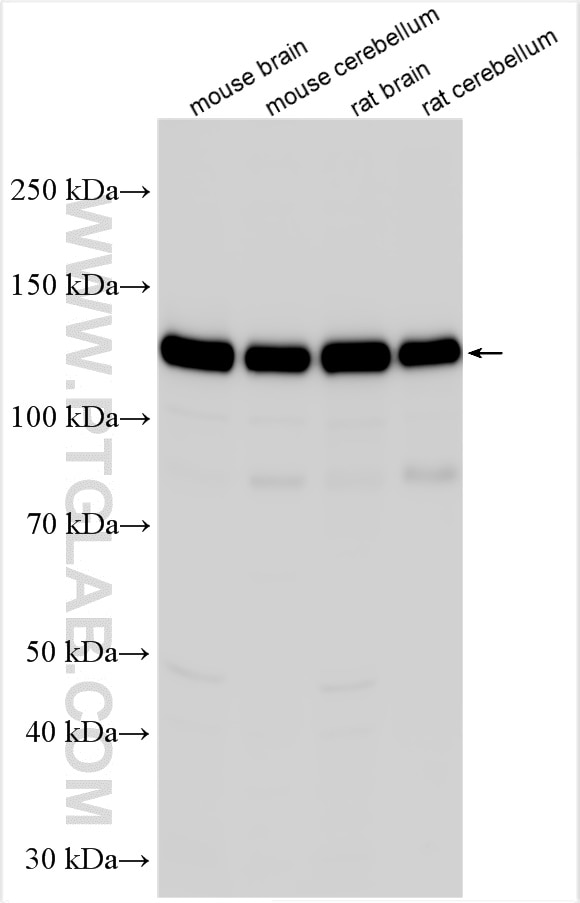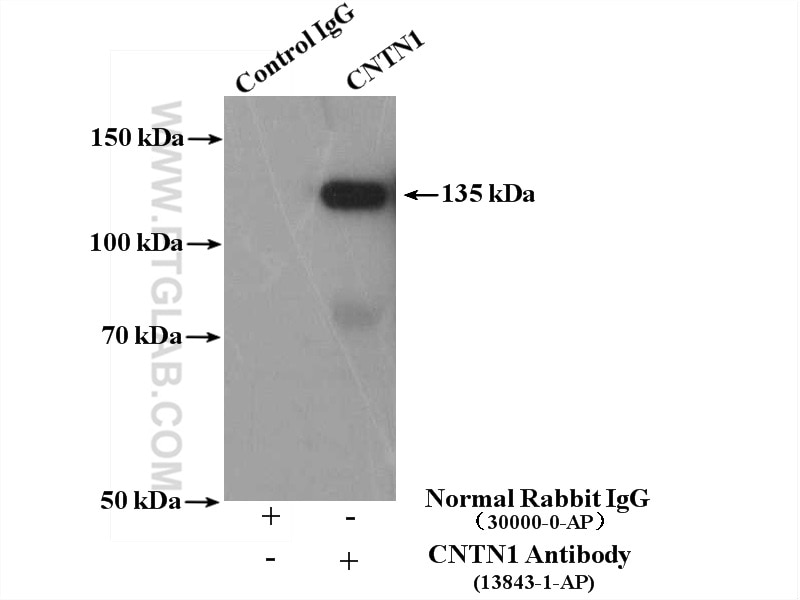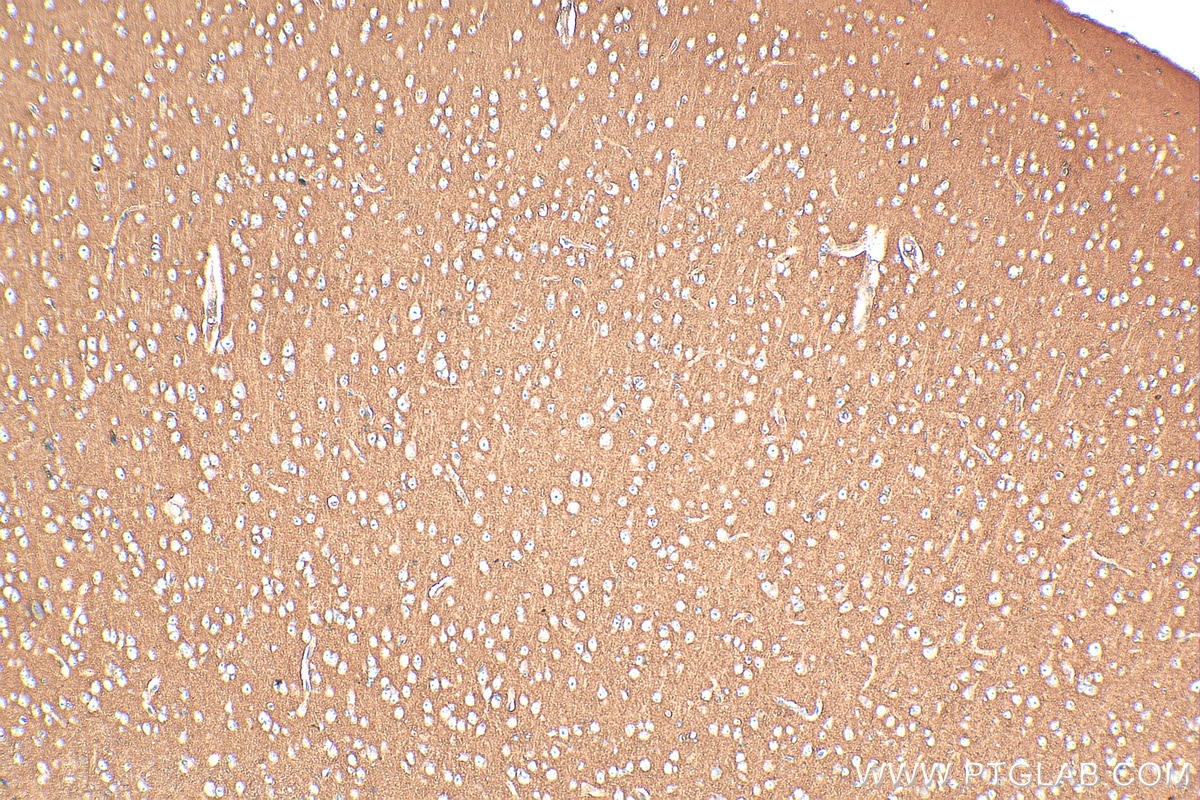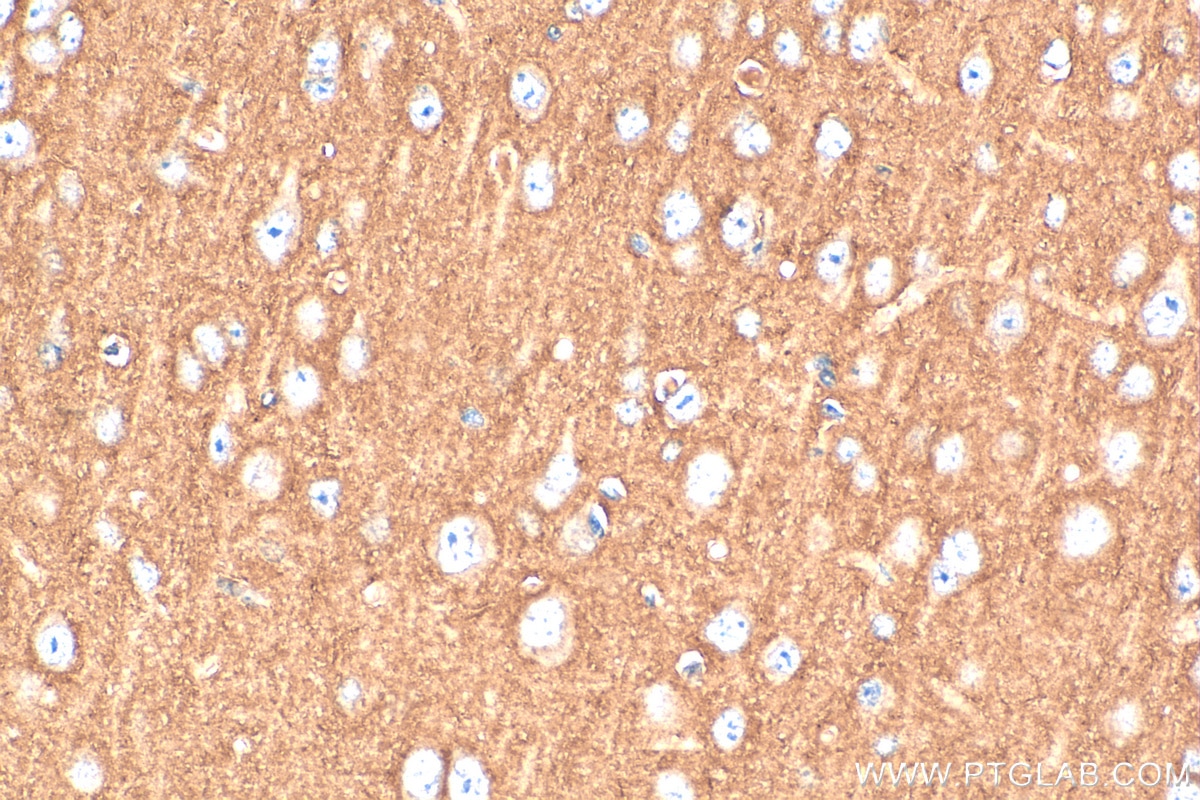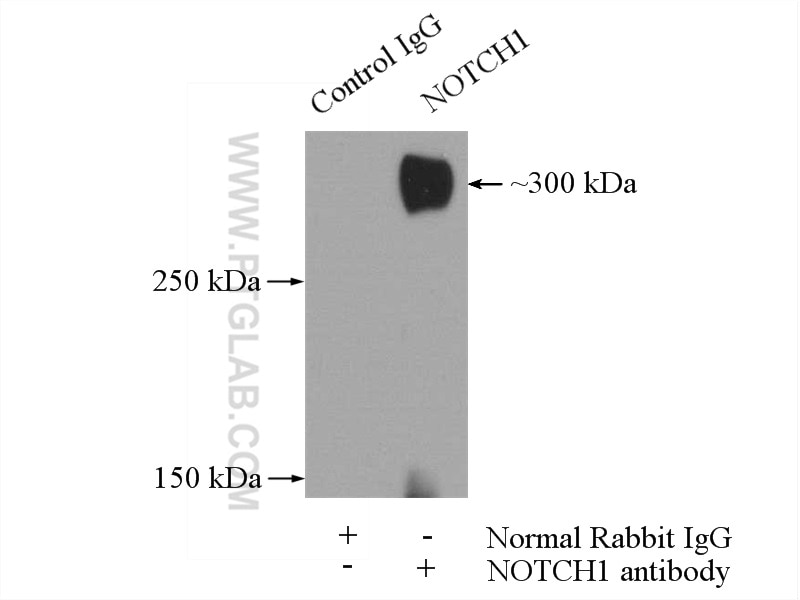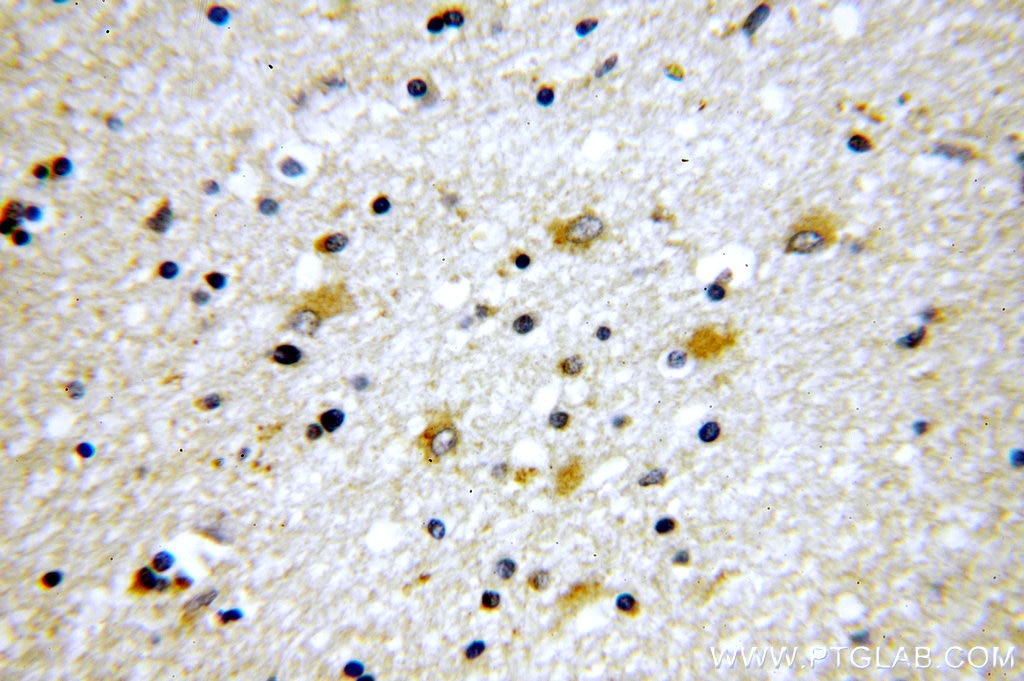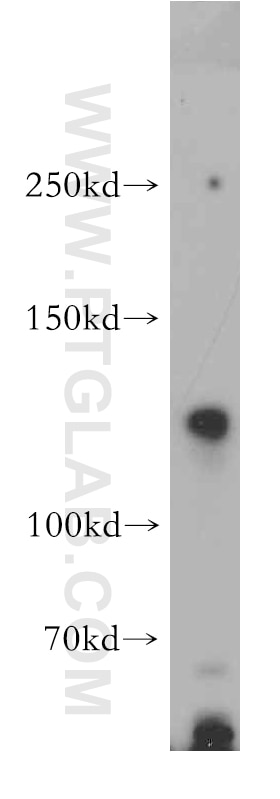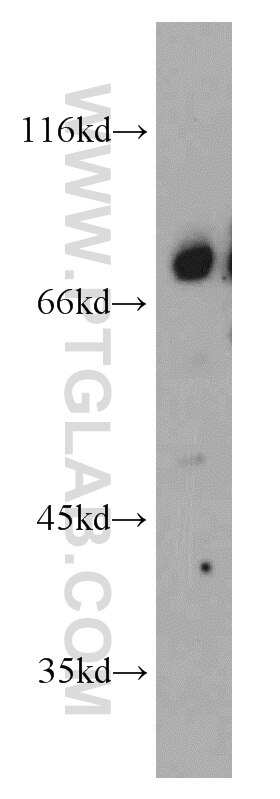- Featured Product
- KD/KO Validated
CNTN1 Polyclonal antibody
CNTN1 Polyclonal Antibody for IHC, IP, WB, ELISA
Host / Isotype
Rabbit / IgG
Reactivity
human, mouse, rat
Applications
WB, IP, IHC, IF, ELISA
Conjugate
Unconjugated
Cat no : 13843-1-AP
Synonyms
Validation Data Gallery
Tested Applications
| Positive WB detected in | mouse brain tissue, mouse cerebellum tissue, rat brain tissue, rat cerebellum tissue |
| Positive IP detected in | rat brain tissue |
| Positive IHC detected in | mouse brain tissue Note: suggested antigen retrieval with TE buffer pH 9.0; (*) Alternatively, antigen retrieval may be performed with citrate buffer pH 6.0 |
Recommended dilution
| Application | Dilution |
|---|---|
| Western Blot (WB) | WB : 1:5000-1:50000 |
| Immunoprecipitation (IP) | IP : 0.5-4.0 ug for 1.0-3.0 mg of total protein lysate |
| Immunohistochemistry (IHC) | IHC : 1:200-1:800 |
| It is recommended that this reagent should be titrated in each testing system to obtain optimal results. | |
| Sample-dependent, Check data in validation data gallery. | |
Published Applications
| KD/KO | See 2 publications below |
| WB | See 6 publications below |
| IHC | See 2 publications below |
| IF | See 2 publications below |
Product Information
13843-1-AP targets CNTN1 in WB, IP, IHC, IF, ELISA applications and shows reactivity with human, mouse, rat samples.
| Tested Reactivity | human, mouse, rat |
| Cited Reactivity | human, mouse, rat |
| Host / Isotype | Rabbit / IgG |
| Class | Polyclonal |
| Type | Antibody |
| Immunogen | CNTN1 fusion protein Ag4803 |
| Full Name | contactin 1 |
| Calculated Molecular Weight | 1018 aa, 113 kDa |
| Observed Molecular Weight | 135 kDa |
| GenBank Accession Number | BC036569 |
| Gene Symbol | CNTN1 |
| Gene ID (NCBI) | 1272 |
| RRID | AB_2877981 |
| Conjugate | Unconjugated |
| Form | Liquid |
| Purification Method | Antigen affinity purification |
| Storage Buffer | PBS with 0.02% sodium azide and 50% glycerol pH 7.3. |
| Storage Conditions | Store at -20°C. Stable for one year after shipment. Aliquoting is unnecessary for -20oC storage. 20ul sizes contain 0.1% BSA. |
Background Information
Contactin-1 (CNTN1), also known as Glycoprotein gp135 or Neural cell surface protein F3, is a neuronal cell adhesion molecule of the immunoglobulin superfamily (PMID: 3049624). It consists of six Ig domains, four fibronectin-like motifs, and a glycosylphosphatidylinositol (GPI)-moiety. Expressed by the central and peripheral neurons, CNTN1 contributes to the formation and function of neuronal connections. It plays a role in axon extension and formation of septate-like junctions between axons and myelinating glial cells (PMID: 23724143). In addition, acting as a ligand for Notch, CNTN1 initiates a NOTCH/DTX1 signaling pathway that promotes oligodendrocyte maturation and myelination (PMID: 14567914).
Protocols
| Product Specific Protocols | |
|---|---|
| WB protocol for CNTN1 antibody 13843-1-AP | Download protocol |
| IHC protocol for CNTN1 antibody 13843-1-AP | Download protocol |
| IP protocol for CNTN1 antibody 13843-1-AP | Download protocol |
| Standard Protocols | |
|---|---|
| Click here to view our Standard Protocols |
Publications
| Species | Application | Title |
|---|---|---|
Nat Commun Identification of genes associated with cortical malformation using a transposon-mediated somatic mutagenesis screen in mice.
| ||
Nat Commun Spatial mapping of juxtacrine axo-glial interactions identifies novel molecules in peripheral myelination. | ||
Front Mol Neurosci Contactin-1/F3 Regulates Neuronal Migration and Morphogenesis Through Modulating RhoA Activity.
| ||
Front Genet CNTN-1 Upregulation Induced by Low-Dose Cisplatin Promotes Malignant Progression of Lung Adenocarcinoma Cells via Activation of Epithelial-Mesenchymal Transition. | ||
Arch Med Sci CNTN-1 promotes docetaxel resistance and epithelial-to-mesenchymal transition via the PI3K/Akt signaling pathway in prostate cancer. |
